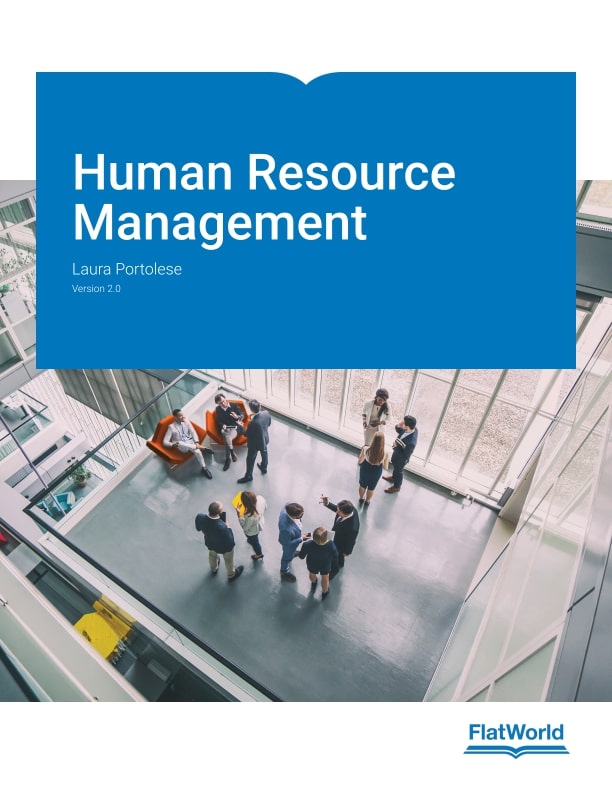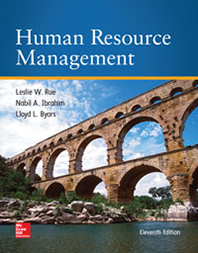Description
Human Resource Management V2.0 by Laura Portolese Test Bank
Chapter 03
Diversity and Multiculturalism
True/False Questions
Section One
- Diversity and multiculturalism are terms that can be used interchangeably.
False; Easy
- Invisible privilege refers to the power and privilege one may experience but not be aware of.
True; Easy
- The colorblind approach is an acknowledgment of the privileges one receives because of their race, gender, or social class.
False; Easy
- People who have power and privilege in one area are likely to experience the same measure of power and privilege in all other areas of life.
False; Easy
- Diversity leads to reduced profitability and lowered standards in customer service.
False; Easy
- Legal compliance is the only reason why companies must promote a multicultural work environment.
False; Easy
Section Two
- Most companies only have an unspoken understanding of their diversity policy which is often not formalized and written down.
False; Easy
- Organizations that have specific diversity plans in place tend to be able to facilitate changes more quickly than those companies which do not have diversity plans.
True; Easy
- Assessment of diversity is the first step in creating a diversity plan.
True; Easy
- Word-of-mouth advertisement is a recruitment strategy associated with the danger of reducing diversity in the workplace.
True; Easy
- Adverse impact refers to employment practices which are openly discriminatory against a protected group.
False; Easy
- The ability to talk about differences and expectations can be a key ingredient in training focused on multiculturalism.
True; Easy
Section Three
- Employers with at least 50 employees are covered under the EEOC.
False; Easy
- EEO-1 form confirms the demographics of an organization based on different job categories.
True; Easy
- Wheelchair access is an example of reasonable accommodation on the part of the employer of a candidate or applicant with disability.
True; Easy
- An English-only policy is not allowed under any circumstances by the EEOC.
False; Easy
- The EEOC laws about religious discrimination consider dress and grooming as factors under the purview of reasonable accommodation.
True; Easy
- An organization cannot retaliate against anyone who has filed a complaint with the EEOC or a discrimination lawsuit.
True; Easy
- The EEOC regulations ensure that people who have served in the armed forces are reemployed in their civilian jobs upon return to service.
True; Easy
Multiple Choice Questions
Section One
- _____ is defined as the differences between people.
- Universality
- Diversity
- Unity
- Homogeneity
- Conformity
b; Easy
- An organization that hires people irrespective of their race, gender, sexual orientation, religion, background, and socioeconomic status—and has a set of policies in place to meet compliance standards—is an organization that supports _____.
- uniformity
- power
- privilege
- diversity
- conformity
d; Easy
- _____ focuses on inclusiveness, understanding, and respect, and also looks at unequal power in society.
- Racism
- Power
- Multiculturalism
- Privilege
- Ageism
c; Easy
- Which of the following is a feature of diversity?
- Diversity at the workplace is clearly defined and understood.
- Diversity is detrimental to an organization’s profitability.
- Diversity in the workplace has a minimal focus on compliance.
- Diversity in the workplace revolves around age discrimination predominantly.
- Diversity focuses on the “otherness” or differences between individuals.
e; Easy
- A system of advantages based on race, gender, and sexual orientation is called _____.
- power and privilege
- equal opportunity
- equality of outcome
- egalitarianism
- social equality
a; Easy
- The system of power and privilege is based on the _____ that is predominant in setting societal rules and norms.
- egalitarian outlook
- legal framework for equal opportunity
- race, gender, disabilities, and sexual orientation
- ideology that all men are created equal
- tendency to like people unlike oneself
c; Easy
- Power and privilege are described as being _____ because one may not initially recognize the advantages of power and privilege that they enjoy.
- tangible
- equitable
- perceptible
- detectable
- invisible
e; Easy
- As Joshua’s career began to grow rapidly in the years following his marriage, he expected Nora, his wife, to take a break from work and look after their child and household as he would be unavailable. Joshua’s expectation reflects that he enjoys _____ privilege.
- race
- class
- sexual orientation
- religious





Be the first to review “Human Resource Management V2.0 by Laura Portolese Test Bank”